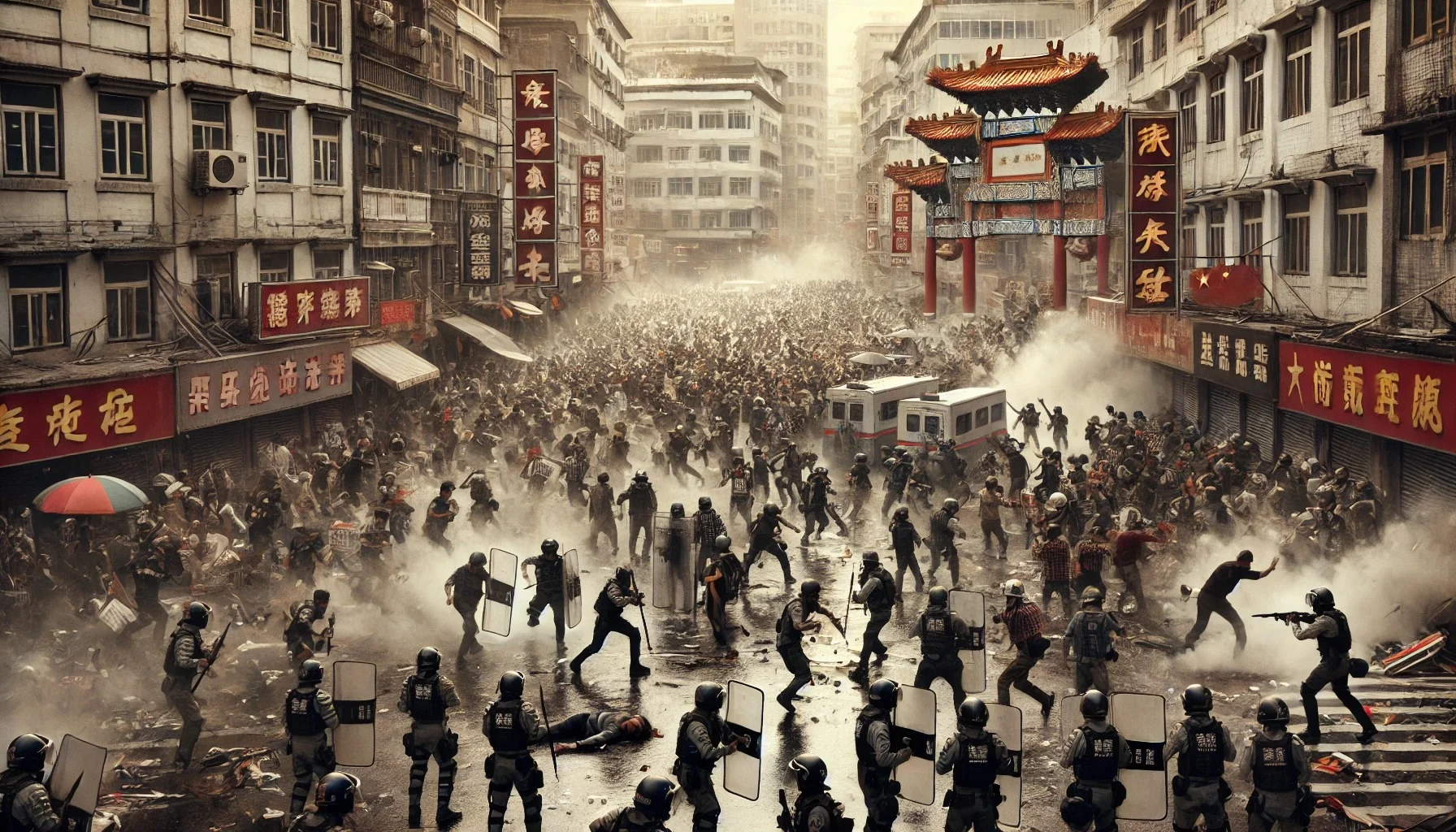
The Urumqi Riots of July 2009
by: The Calamity Calendar Team
July 5, 2009
The Spark of Unrest
In the scorching heat of early July 2009, the city of Urumqi, the capital of China’s Xinjiang Uyghur Autonomous Region, was a powder keg ready to explode. Decades of simmering tensions between the indigenous Uyghur population and the Han Chinese majority were about to ignite into one of the most violent episodes in recent Chinese history.
The immediate catalyst was a gruesome incident far from Urumqi, at a toy factory in Shaoguan, Guangdong province. On the night of June 26, 2009, a brawl broke out between Han and Uyghur workers, leading to the deaths of two Uyghur men. This incident, fueled by rumors and amplified by ethnic tensions, set the stage for what was to come.
A Peaceful Protest Turns Violent
On July 5, 2009, a peaceful protest was organized in Urumqi by Uyghur students. They demanded justice for the slain workers in Shaoguan and sought to address broader grievances of discrimination, cultural suppression, and economic marginalization. Initially, the demonstration was peaceful, with students marching through the streets holding banners and chanting slogans.
However, as the day progressed, the mood shifted. Clashes broke out between protestors and the police, and soon the streets of Urumqi were engulfed in chaos. The anger and frustration that had been building for years erupted into violence. Reports of beatings, arson, and looting spread rapidly. Both Uyghur and Han communities were targeted, and the city descended into a terrifying frenzy.
Thanks for subscribing!
The Escalation of Violence
By July 6, the violence had intensified. Eyewitnesses recounted horrific scenes of brutality—shops set ablaze, vehicles overturned, and individuals attacked indiscriminately. The death toll began to rise, with the official count later reaching 197, though some sources claim it could be higher.
The Chinese government responded swiftly. Paramilitary forces were deployed to restore order, and a strict curfew was imposed. The streets of Urumqi were patrolled by armed soldiers, and mass arrests followed. The government accused the World Uyghur Congress, an exile group, of orchestrating the unrest, a charge the group denied.
The Aftermath: Casualties and Damage
The riots left a trail of devastation. Official reports documented 197 deaths, with a majority being Han Chinese. However, Uyghur groups contested these figures, claiming that many Uyghur casualties were underreported. The violence also resulted in significant property damage, including destroyed shops, homes, and public infrastructure.
The economic impact was profound. Businesses were shuttered, and tourism—a vital part of Urumqi’s economy—suffered greatly. The city’s sense of security was shattered, and the wounds inflicted during those three days would take years to heal.
Government Crackdown and Human Rights Concerns
In the immediate aftermath, the Chinese government launched a severe crackdown. Security measures were tightened, communication channels were restricted, and mass detentions began. The government implemented the “Strike Hard” campaign, targeting Uyghur activists and anyone suspected of separatist activities.
Reports of human rights abuses soon emerged. Over one million Uyghurs and other Muslim minorities were reportedly detained in re-education camps, a policy that drew widespread international condemnation. The heavy-handed approach aimed at maintaining stability, but it also exacerbated ethnic tensions and fueled global criticism.
The Lingering Tension
Today, the situation in Xinjiang remains tense. The region is heavily surveilled, and Uyghur culture and religious practices are closely monitored and often suppressed. International organizations and foreign governments have repeatedly called out China for its treatment of the Uyghur population, imposing sanctions and demanding transparency.
The Urumqi Riots of July 2009 are a stark reminder of the deep-seated ethnic divisions in Xinjiang. They highlight the fragile balance between maintaining order and respecting human rights. As the world watches, the plight of the Uyghurs continues to unfold, a testament to the complex and often painful history of this troubled region.
Stay in the Loop!
Become a Calamity Insider and get exclusive Calamity Calendar updates delivered straight to your inbox.
Thanks! You're now subscribed.